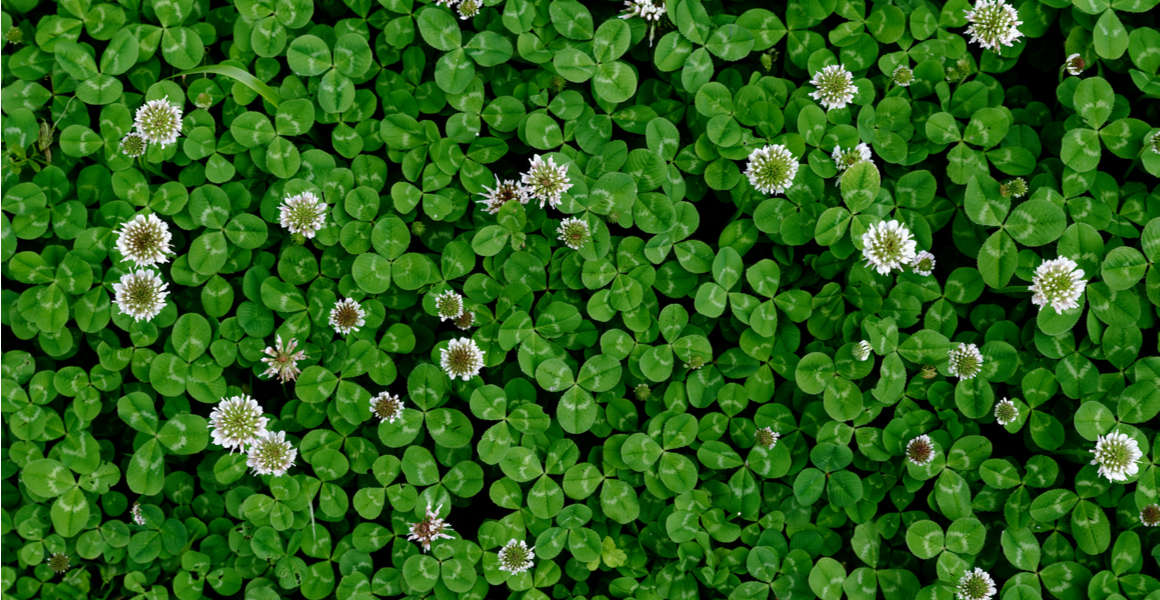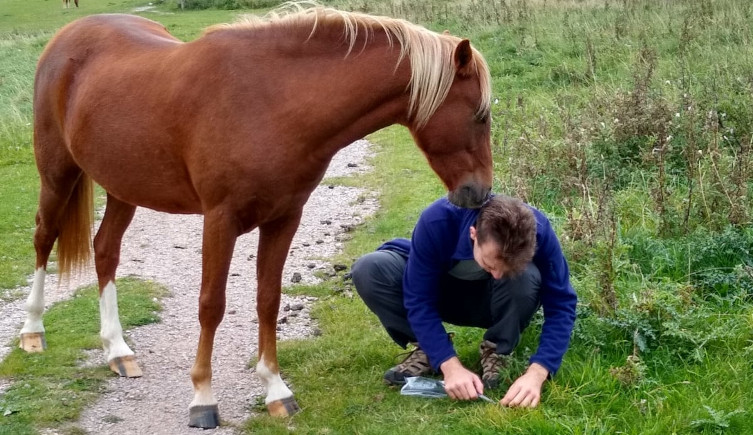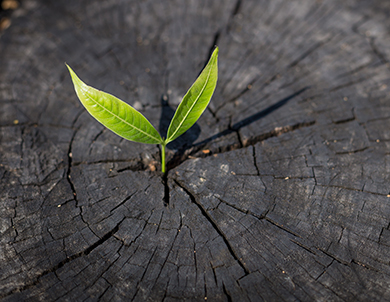Around the world, the places we live in are changing the way that nature evolves.
White clovers adapt in similar ways to face the dryness of cities, providing one of the clearest examples of how humans are influencing nature.

White clovers grow all around the world, making them suitable for analysing the impacts of cities globally. Image © Eric Dodson/Shutterstock
Around the world, the places we live in are changing the way that nature evolves.
White clovers adapt in similar ways to face the dryness of cities, providing one of the clearest examples of how humans are influencing nature.
Cities are often known as urban jungles, and just like their natural counterparts they act as a powerful selection pressure on the plants which live in them.
A study looking at white clover, a plant which grows in urban areas globally, found that it repeatedly adapted in similar ways to city living wherever it was found.
The researchers found that the reduced number of herbivores in an urban environment allowed the plant to produce less cyanide, used to ward them off, as it adapted to the more limited water supplies in its habitat.
Professor Rob Ness, a co-author of the research, says 'This study is a model to understand how humans change the evolution of life around us.
'Cities are where people live, and this is the most compelling evidence we have that we are altering the evolution of life in them. Beyond ecologists and evolutionary biologists, this is going to be important for society.'
The findings of the study, led by the University of Toronto Mississauga, were published in the journal Science.

Cities affect the environment in different ways, with impervious materials used in their construction increasing the risk of flooding. Image © Steve Mann/Shutterstock
Our actions are changing the world around us in unprecedented ways, including changes in climate, pollution and habitat.
One of the main ways we have modified our world is through the construction of cities, which replace natural surfaces and canopies with tarmac and tall buildings. One impact of such a change is the creation of urban heat islands, where our cities absorb large amounts of heat, raising temperatures in cities by up to 4°C compared to the surrounding countryside.
Covering over the ground with water-impenetrable materials such as tarmac also increases the risk of flooding, with heavy rain overwhelming drainage systems and running into roads, stations and homes.
These impacts can also cause changes in wildlife living in cities. While urban areas can be beneficial for some species, such as foxes and hedgehogs, their impacts can harm others, with air pollution found to 'confuse' insects searching for plants to pollinate.
Air pollution also takes a toll on human health, with air pollution ruled to have contributed to the death of nine-year-old Ella Adoo-Kissi-Debrah in London, and estimated to cause around nine million deaths a year.
As a result of these many impacts, cities can influence the way life itself evolves, and have done for hundreds of years. Industrial pollution from coal in Manchester led to selection for the dark form of the peppered moth, as it better camouflaged against soot-stained trees than the lighter form. Since the introduction of clean air laws, the white form has been staging a comeback.
Meanwhile, the eastern water dragon, a species of lizard found in Australia, was found to be undergoing different selection for traits such as head width and limb length depending on which park in the city of Brisbane an individual lived in.
However, these studies have focused on smaller areas, which may not be representative of processes around the world. As a result, scientists turned to the globally distributed white clover plant as a way of replicating selection pressure on a grand scale.
They found that similar adaptations were being repeated across the world.

The project relied on volunteers from around the world to sample over 100,000 clovers. Image © Marc Johnson
Following a call out on social media that spread around the world, over 110,000 samples of white clover were collected from 160 cities across 26 countries. This was complemented with information about the environment the clovers were found in.
The researchers were particularly interested in genes associated with the white clover's ability to produce hydrogen cyanide. The toxin is produced by the plant after being damaged, as long as it has two specific genes activated.
However, the researchers found that many plants have lost the ability to produce cyanide. They suggest that the energy saved from not producing the chemical enables the clover to tolerate more stressful environmental conditions.
The analysis of the dataset revealed that the ability to produce the toxin was strongly linked to distance from the centre of a city, with the most central clovers almost half as likely to produce it than those in the most rural areas.
Around 40% of cities showed this trend, which occurred in cities where the white clover was native as well as those where it had been introduced. The trend could not be explained by changes in genetic diversity, or a lack of gene flow, but could be by selection pressures.
The main pressure in urban areas is water availability, which is responsible for around 11% of the variation between urban areas and rural ones seen during the analysis. Cities with greater levels of vegetation, and therefore more herbivores, were more likely to have stronger selection for cyanide genes than in those with less vegetation.
The researchers hope that knowledge of how urban environments influence evolution could be used to help conserve vulnerable species by helping them adapt to urban environments, as well as better tackling pests as they do the same.

We're working towards a future where both people and the planet thrive.
Hear from scientists studying human impact and change in the natural world.
Don't miss a thing
Receive email updates about our news, science, exhibitions, events, products, services and fundraising activities. We may occasionally include third-party content from our corporate partners and other museums. We will not share your personal details with these third parties. You must be over the age of 13. Privacy notice.
Follow us on social media